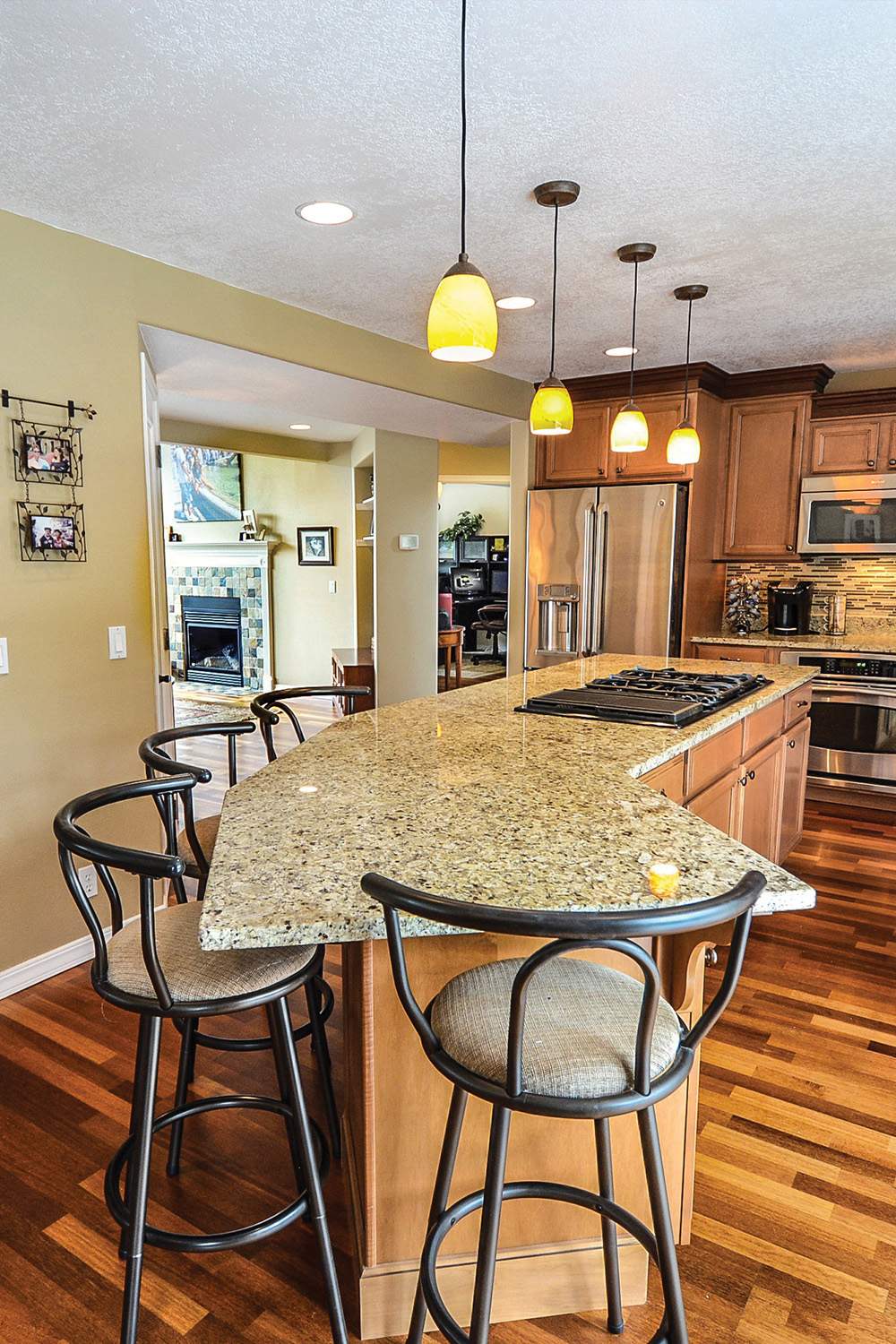By Patrick Keegan and Brad Thiessen
Q: After 20 years with the same lighting in our home, it’s time for a change. I’ve done some research and there are so many types of light fixtures and bulbs it’s making my head spin! How can I select something practical, affordable and efficient?
A: This is an excellent question because we often take lighting for granted. We choose fixtures and bulbs without thinking through some of the more important issues, such as specific lighting needs of the room, how fixtures work together and how to save money on energy bills.
Saving energy starts with choosing the correct bulb. Efficiency standards for incandescent bulbs between 40 and 100 watts, which took effect in 2012, led to the halogen bulb (also known as energy-efficient incandescent). These bulbs are at least 25 percent more efficient than the old incandescents. The other two common types of household bulbs, compact fluorescent lamps (CFLs) and light-emitting diodes (LEDs), are even more efficient.

COURTESY pixabay.com; Creative Commons License
Energystar.gov estimates that you can save $75 a year by replacing the five most-used incandescent bulbs or light fixtures with ENERGYSTAR-certified LED or CFL lighting. Of the three types, LEDs tend to save more money over the long run, and LED prices have decreased in recent years. A downside of CFLs is that they contain a small amount of toxic mercury that can be released into your home if one breaks.
When you’re considering which type of bulb to buy, consider both watts and lumens. Watts indicate how much energy (and therefore, money) is used to produce light. Lumens indicate how much light the bulb produces. A handy comparison is that an 800-lumen bulb is about equal to the amount of light from a traditional 60-watt incandescent bulb. Lumennow.org offers an excellent guide to understanding bulbs.
Bulbs also give off different colors of light, known as color temperature. If a bulb burns out—or in the case of an LED, as it dims over time—it can be challenging to find a replacement that matches other lights in the room. If the variation bothers you, you may want to purchase and install bulbs of the same brand and wattage for the entire room or area at the same time.
Installing dimmers instead of on/off light switches is a good way to save energy while giving you greater control of the amount of light in the room. Not all bulbs are dimmable, so be sure to check the label on the bulb. It’s worth considering whether you have the right number and the right location for light switches. We recommend hiring a licensed electrician if you decide to install new lighting and switches.
Now that we’ve covered bulbs, let’s move on to fixtures. Different types of fixtures have different functions. Ambient lights such as sconces and glass-covered fixtures provide gentler overall lighting, while directional fixtures such as pendants, desk lamps and track lighting provide task lighting that focuses on areas where work is done. Not all bulbs can be used in an enclosed fixture or work outdoors.
As you choose a light fixture, make sure it can provide the correct level of brightness, with an appropriate size and number of bulbs. It can be disappointing to install a ceiling light with the style you love, only to realize it doesn’t provide enough light for the room; or the opposite, that your room is flooded with too much light, which also wastes energy and money. It’s not a good idea to mix bulb types in a fixture, as the excess heat from an incandescent or a halogen light can diminish the performance of an LED. 
The Lighting Research Center website (http://www.lrc.rpi.edu/) provides a resource page with many sample lighting layouts for every room in the home, which you can find by entering the phrase “lighting patterns for homes” in their website’s search engine. Home décor sites like Better Homes and Gardens, Real Simple, HGTV and similar sites also give excellent lighting explanations, plans and ideas.
It’s always a good idea to check with your local electric co-op as they may offer energy audits or lighting product rebates.
With a little planning, you can have a well-lit energy efficient home you’ll enjoy for years to come!
Patrick Keegan writes on consumer and cooperative affairs for the National Rural Electric Cooperative Association, the Arlington, Va.-based service arm of the nation’s 900-plus consumer-owned, not-for-profit electric cooperatives. Write to [email protected] for more information.




